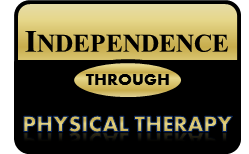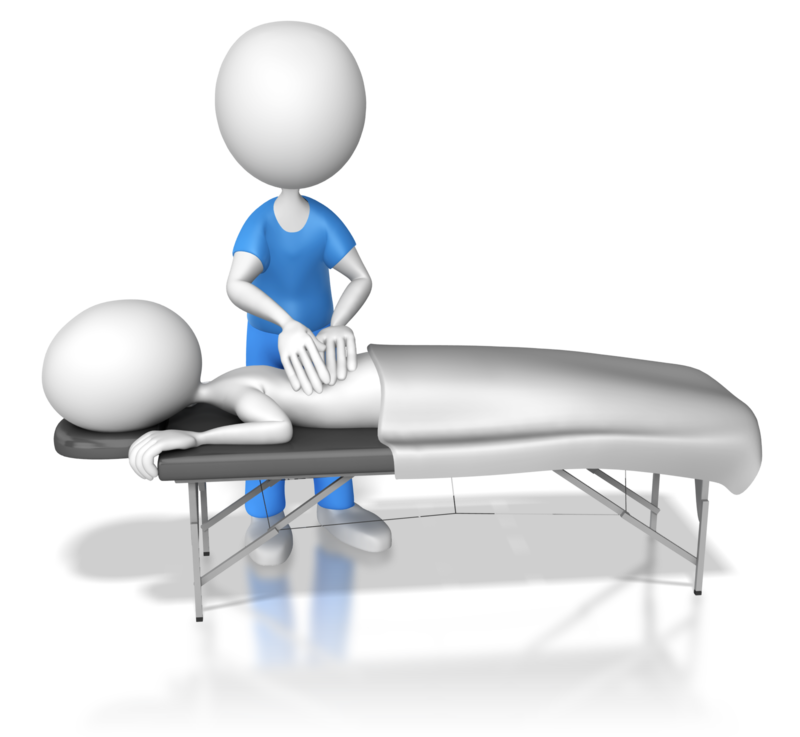|
Independence through Physical Therapy Philosophy of
Care
If you are
being seen at
Independence through Physical Therapy
(ITPT) you have likely tried several different strategies to manage the symptoms you
currently face. Many of the common approaches have been chemistry-using medications either oral or
through injection or other types of physical care such as physical therapy, massage, or
chiropractic. Sometimes the care attempted was to ignore the problem. We at this clinic believe
that most physical symptoms require some type of applied physics or physical care to improve the
current problem.
Symptoms that we often see people for include
pain, stiffness, loss of range of motion, weakness, balance problems, inability to walk,
swelling, or even incontinence (inability to hold back urine). A physical therapist will
perform an evaluation of you which will include listening to your story of what has happened
to you and why you think you have this current problem. They will review your medical
history, medications, surgeries and past treatments applied in an attempt to uncover clues to
why you are having this problem. The evaluation will be performed with the therapist typing
notes to outline the clues that your story reveals, they will also perform a series of tests
to collect objective data to help them continue to unravel the mystery behind your problem.
Once they have collected their findings of objective data including strength testing, range
of motion (how far a body part can move), size, ability to move or maintain balance to name a
few-they will then type these findings into their report and at that point they will be able
to make a determination of what they believe is wrong with you. This evaluation session will
result in a typed note to send to your medical practitioner to report the findings on this
evaluation. The last part of the evaluation session will be to explain to you what the
therapist believes is causing your problems and outlining a plan of action to provide you
care to attempt to improve it. If there is adequate time in this session they will try a
physical technique and test our their theory to see if it improves any of your symptoms.
These results will also be sent to the medial care team. The therapist will then ask the
office manager to help schedule follow-up visits to instruct you in the methods they believe
will best help you learn to manage your current problem.
When you
work with one of the physical therapists at
ITPT once
they complete the evaluation they will then continue following the plan of care they have outlined
with you trying some of the different physical methods they believe will best help your problem.
Using a scientific method they will continue typing notes to follow the trail to determine the best
outcomes for you-the format of notes they use is considered a “SOAP” note (Subjective, Objective,
Assessment and Plan). At each session they will ask you questions-this is the Subjective portion of
the treatment encounter to get an idea of how you did with the previous methods attempted and to
find out your current status. During this part of the session it is important to let them know if
anything significant has changed, for example if you have had a fall or something new has happened.
The Objective part of the session is a chance go collect some data-things they can measure such as
Range of Motion so they can compare this to the previous session. Also in Objective is the
Treatment part of the session-they will demonstrate strategies for you that they believe will be
the most effective. Next in the Assessment portion of the session they will determine how they
believe you are doing-they might note that you have increased your Range of Motion even though the
pain might not have changed, or they may state that you report that you are sleeping better.
Finally the Plan is the part of their note that helps them lay a treasure map for themselves to
determine what they want to try with you at your next visit-often it will tell them to review the
last thing you were taught and perhaps which new strategy they want to
apply.
Being a physical therapist is being a scientist
and a behavior management specialist. As a scientist we use the scientific method of
observing, making a theory or judgment, trying an experiment, repeating observations , and
determining if the results of the experiment were successful or failed. As a behavior
management specialist, we try to help you see which behaviors make you better and encourage
you to continue with those, and which behaviors worsen you and help you avoid
those.
By using the scientific method we make
observations of how things are before we do anything-this is taking a Pretest of any symptoms
you might have subjectively-your story, as well as objective measurements we can take. Next
step is trying an experiment or one of our physical treatment strategies. After attempting a
treatment we repeat the Pretest which is now considered a Post test. Finally we help you
determine if the outcome or result from the treatment made anything better or worse. We like
to instruct you in this method as well because at home you can determine how you feel trying
to find the position/posture or movement/gesture that bothers you the most as a Pretest, then
perform your treatment strategy at home, and finish with the Post test. By using this tool
you will be able to see for yourself which approaches you learn help your problem and which
ones are not beneficial. For example, when you perform the exercises you were taught and you
feel better then you keep doing them. If, however, you forget or are feeling so good you do
not perform them and you feel worse this is also an important clue to the puzzle. We find
that we can keep our physical symptoms of pain and swelling under control if we continue the
routines that we teach our patients.
The main
goal of
ITPT is to help patients learn to understand the cause of their problems and learn
strategies they can perform to keep this problem under control. Our hope is to help people stay in
their own homes forever and do all of the things they want to do without relinquishing control of
their situations and having to move into a nursing home.
You will
find at
ITPT
that we do not have any gym equipment or other medical
equipment such as Ultrasound or Electrical Stimulators or traction devices. Instead we use
techniques that we have found to be more effective for our patients in learning to control
their own problems. After being in 5 car accidents, breaking a leg bone and having several
sports injuries Loraine ended up having back surgery which sadly only gave her one month of
pain relief. However, she learned to perform osteopathic techniques to help improve the
alignment of her spine which has helped her control her symptoms and virtually remain free of
pain for over 10 years now. Loraine also suffered from knee pain for years but once she
learned about managing swelling problems she finds that wearing her compression stockings
prevents the knee pain from coming back. Loraine and Vonnie share the belief that the
alignment technique of Releasing Joint Restrictions and the strategies of using a simple
massage known as Manual Lymphatic Drainage (MLD) along with appropriate compression are the
best ways to help people get their symptoms under control. Once these symptoms are more
effectively being controlled they continue to work with patients to instruct them in
strengthening exercises to maintain the improved alignment and progress to the next level.
For those patients who only suffer from weakness or balance difficulties they start with work
on balancing exercises, strengthening exercises and cardiovascular/endurance training. We
believe in treating patients as a whole and teaching them the strategies needed to manage any
physical symptoms to be able to live a long, healthy, and active
lifestyle.
We do use hands-on manual techniques at our office
once patients are demonstrating a good understanding of performing their program at home to
support our efforts. However, we have found that the combination of self care is far more
cost effective in preventing symptoms from returning. Most insurance companies will not pay
for “passive care” that is considered maintenance-but rather wish for you to get better so
you do not require ongoing care. If you prefer to only have manual care discuss this with
your therapist as you are working together to develop a plan of care. You are paying for your
care and we do want to give you the best care possible and wish to be good stewards of our
tax dollars as well as your time and money.
|

